9 Ways Augmented Reality Will Change Your Life
I have seen the future of augmented reality — and it’s coming to your home. It will change your life in more ways than you can imagine.
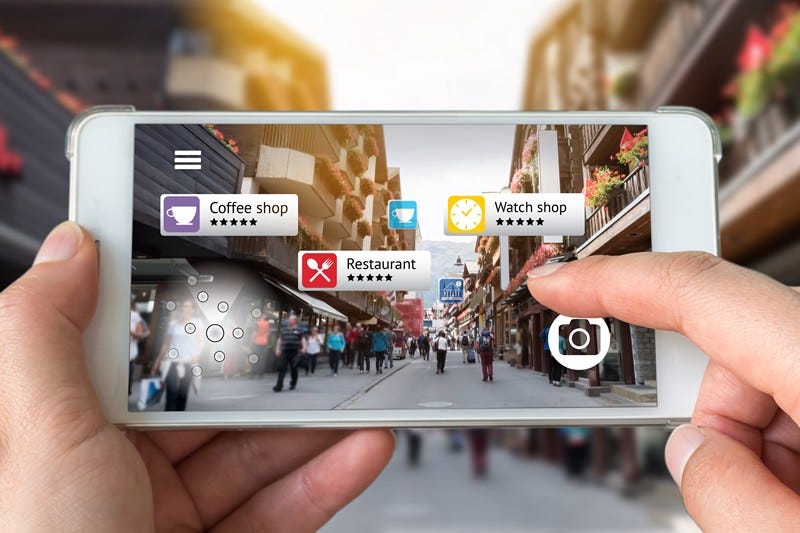
I have seen the future of augmented reality — and it’s coming to your home. It will change your life in more ways than you can imagine.
The technology behind Pokemon Go is set to leap beyond games and silly cat faces. Driven by advances in computer vision, AI and cloud computing, tomorrow’s augmented reality (AR) will transform everything from travel to real estate, healthcare to education.
Painting the World with Data
I recently led an AR project for one of the world’s biggest tech companies. They’re developing a new system to bring interactive, social AR experiences into the home.
As I spoke with VR & AR developers, visual artists and hardware engineers, one thing became clear. AR is going to be bigger than VR. Way bigger.
The reason why is simple. VR cuts you off from the world around you. AR — technology that overlays interactive digital content on the real world — enhances the world around you.
This future is being created by startups like 6D.ai. They’re building an “AR Cloud” — a 3D digital map of the real world. Think of it as a bridge between the physical and digital worlds.
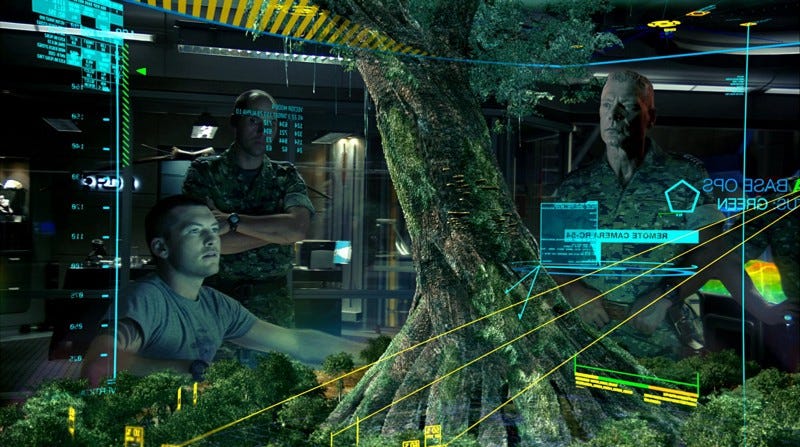
“Avatar” presented a vision of AR controlled by gesture and voice
Soon we’ll be able to unlock this invisible digital layer with our smartphone. Or a wearable, head-mounted display (HMD) that combines phone, audio, and AI assistants. We’ll control the digital experience with our voice and hand gestures.
To quote one AR expert, “The world is about to be painted with data. The canvas is as broad as the physical world, and blank as a fresh sheet of paper.”
The Holy Grail of AR
“Persistent AR” will be a game changer for the industry. This refers to the persistent geolocation of AR content — anchoring objects in space so these virtual objects can be visible to an unlimited number of users at the same time.
Your AR pet should still be in the place you left it when you went to bed. The content needs to be precisely placed at the correct geographical coordinates.
The implications are huge. We as a society will move beyond the screen. The user interface won’t be a flat piece of glass, but the physical 3D spaces in which we live and move around.
Someday we’ll look back and be amazed there was a time we had our faces buried in our phones, bumping into each other as we walked around.
How will life be transformed when social, persistent AR becomes a reality?

1. Navigation
Finding your way around is one of the clearest use cases for AR. Carmakers are offering head-up displays (HUD) on windshields that support navigation directly in your field of vision. Google recently introduced a new augmented feature for Maps that overlays navigational arrows on the real world as seen through your camera.
2. Task Assistance
Say you’re trying to repair a plumbing or electrical system. Your AR app will guide you through the steps, lighting things up and drawing arrows. It may even give you a virtual fist-bump when you complete the job.

3. Gaming & Entertainment
Persistent AR will turn your entire living space into an interactive gaming arena. You’ll have immersive, social experiences that leap off the screen and into the world around you, from first-person shooter games to tabletop games like Settlers of Catan. You’ll be able to interact with virtual football players, play quidditch with Harry Potter or ride one of Khaleesi’s dragons from Game of Thrones.
4. Travel & Lifestyle
Today we browse websites or Instagram to learn about travel destinations. Tomorrow we’ll have immersive 3D videos that recreate the experience of being in Thailand or Bali — from the comfort of our living room.
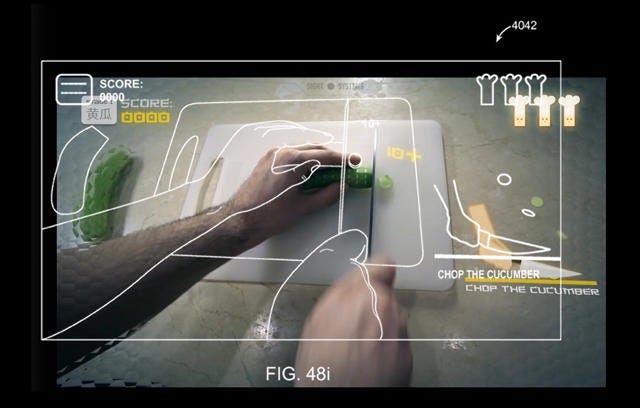
5. Food & Cooking
New apps like Kabaq enable consumers to see realistic virtual 3D food on their table in restaurants or ordering online. Future apps will combine smart kitchen appliances with interactive turn-by-turn recipes. They’ll give you audio/video guidance for each step of a recipe and show you how to plate and present your dishes.
6. Beauty & Fashion
Smart mirror apps like Memomi Labs will let you try on clothes, makeup, change hair color — virtually. The success of Snapchat lenses suggests this will be another huge area for AR apps.

7. Home Improvement & Real Estate
The Ikea Place app lets you hold up your phone and use the camera to place the digital furniture anywhere in a room to see how it looks in your home. Houzz gives you a 3D preview of hundreds of thousands of furniture and decor products and lets you move them around and position them to see how they look before you buy. Homesnap, a real estate search engine, has a “Walk the Property Lines” tool that shows the property lines around any home. Realtors think AR can make the home buying process more fun and engaging.
8. Health
Today neurosurgeons use special AR microscopes that overlay critical information about brain structures on the surgical field. A company called AccuVein has invented an AR scanner that projects over skin and shows nurses and doctors where various veins, valves and bifurcations are in a patient’s body. There have been studies on AR’s potential to enhance post-stroke rehabilitation. Home-based AR will transform the treatment of chronic conditions like diabetes, tying into wearable blood-glucose monitors and providing interactive recommendations.
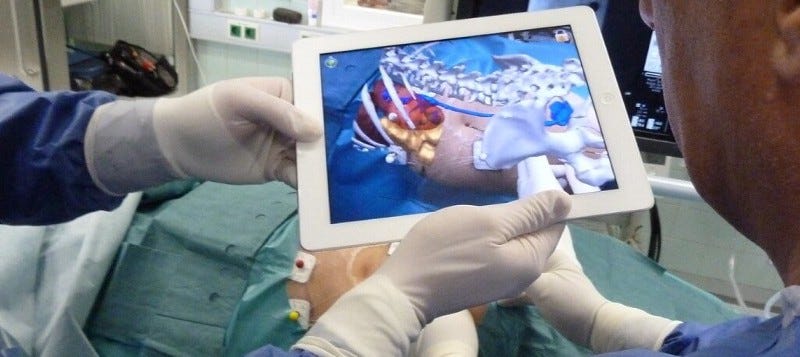
9. Education
Interactive AR experiences will make it easier to learn complex educational subjects — whether it’s dissecting a frog or building electrical circuits. AR sensory overlays will add extra visual and sound information for learners which helps them identify and recall the content. Research shows that looking at 3D experiences forces people to use 3x their normal working memory. Students will be pushed harder with AR learning & education apps, but they’ll have fun if the experience is collaborative and social.
Building the AR Cloud
Just as we needed HTML before we could have Google, persistent AR depends on three things working seamlessly together: computer vision, AI, and the AR cloud.
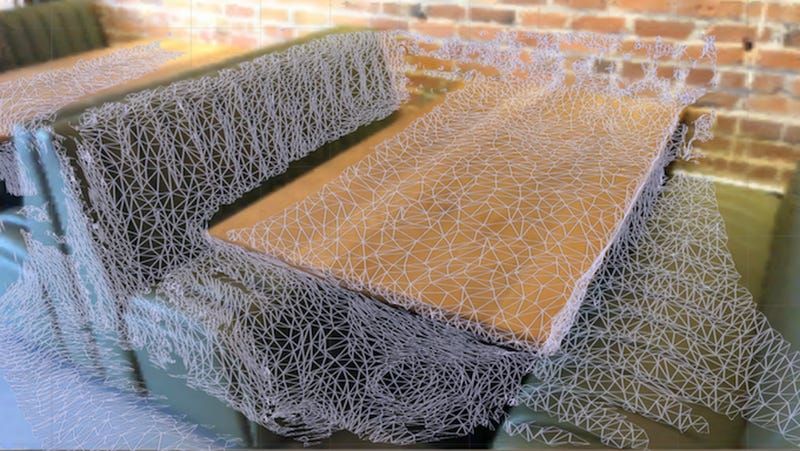
Tech companies are investing in AR developer tools. Last year Apple announced an AR platform for iOS called ARKit and Google responded with ARCore for Android. These tools help developers detect real-world shapes and planes where they can anchor digital content.
Google recently announced its Cloud Anchors shared AR experiences in the new ARCore 1.2. The tool will let you work with a friend on a shared art project or design — a multi-user collaborative experience.
Other companies developing cloud-based multi-user AR capabilities include YouAR, Blue Vision, Ubiquity6, 6D.ai, and Niantic’s Escher Reality.
The technology challenges are significant: cross-platform computer vision, interactivity of multiple AR apps in the same location across devices, real-time scene mapping, geometric occlusion of digital objects, localization of devices beyond GPS (the AR Cloud). A persistent AR system should have a semantic understanding of the real world — it should know the difference between a house, a tree and a road.
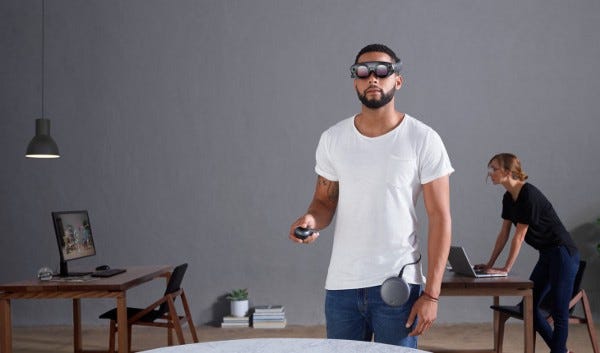
Magic Leap’s head-mounted AR display
But that’s just the plumbing. The exciting stuff is what we’ll be able to build on top of this infrastructure.
AR will transform how we learn, shop, and communicate. It will change our lives just as radically as the smartphone.


